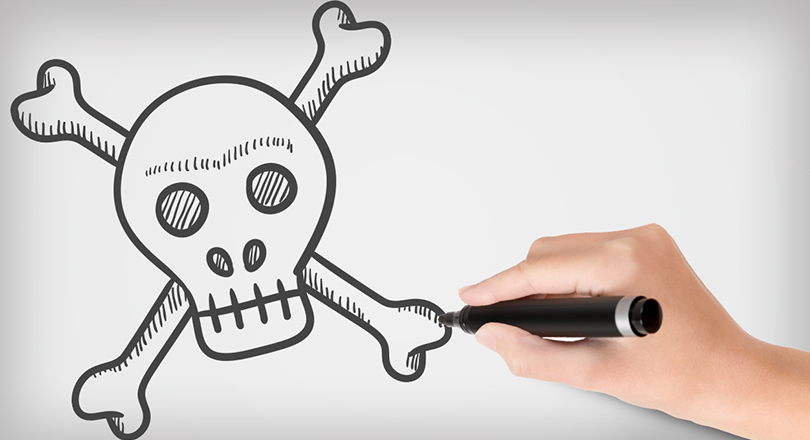
The short answer, not completely.
There is a zombie like effect from whiteboards still lingering around. It’s just that now, whiteboard animations are not as applicable or relevant for businesses as they used to be. They do still hold power in educational capacities, if done right, but for promoting a product they’ve lost their luster.
The Heyday of Whiteboards
The first relatively famous whiteboard animation appeared just after 2005 with the launch of Youtube. According to one source, it was originally UPS, the popular postal delivery service, that came up with the idea of turning one of their meeting briefings into a marketing video. It was a tremendous success for the brand. Later, the Royal Society of Arts began to convert select lectures into whiteboard animations and as a result, held the biggest launch achievement for whiteboard animations thus far. The RSA focus Youtube Channel garnered over 48 million views in their first run. Whiteboard animations were a viral success.
(Here’s the most popular Whiteboard from RSA to date!)
Many brands adopted the style, it seemed like everyone was jumping onto the whiteboard bandwagon, some followed the craze without properly evaluating the fit for their market.. From Bridgestone Golf balls to Automotive Insurance or IT software, the spread of whiteboard animations was prolific. Despite the fact that this style and the message was neither useful or aligned with the company branding, many companies continued to adopt the style.
A Saturated Decline
Audiences have grown tired with typical whiteboard animations. The overwhelming abundance of them flooding into the internet has left little to be desired. Brands are moving on to much more engaging formats like 360 video and elegantly animated explainer videos. Most serious marketing teams have moved away from whiteboard animations over the last 5 years. The change came, in part, from the saturated use of whiteboard animation but also because of the ease of creation of animated explainers.
With companies like Fiverr, Upwork, and Powtoons providing cheap access to animators and animation tech, marketing teams are opting to build video projects that offer more flexibility across the creative landscape. Startups and small businesses are able to build a cost effective animation that is simple enough to convey the right message but creative enough to still engage.

(Be careful when buying from those platforms)
Productive Alternatives
The popular shift away from creating whiteboard animations has happened as a result of the advances in video animation technology and software. Softwares like After-Effects and our very own Wipster, are allowing teams to work together in an incredibly efficient manner, leaving more room for bigger and better productions at a fraction of the previous costs. This affords animation teams the flexibility and capability to generate much higher engagement with their audience and generate significant returns.
In fact, big brands are rarely developing whiteboard animations anymore, which is no surprise due to how saturated the medium is. At the peak level of whiteboard perforation into the market, brands needed to expand much higher budgets in order to differentiate their message. Just take a look at this 2015 “whiteboard” from Purina Dog Food. It’s pretty much a full scale animation with CG layers and animated effects.
Automated Laziness
The slow death of whiteboards came partially due to automation of building quick and cheap explainers. Freelance animators designed templates so that they could engineer the fastest possible turnarounds on whiteboard videos. The end result? A strong message usually getting conveyed in poor fashion. You know the type of video, it’s a great story along a valuable journey, but the animation is lacking and the pen and hand doing the drawing clearly looks like a staccato magazine cutout. It’s clunky and lacks grace. We now find these videos in shady internet offerings bearing the promises of extreme weight loss or gaining the “skill to date” whomever we want.
What a bargain!
When to Use Whiteboards
The original and best use of whiteboard animations is still the same. To take a fairly complicated piece of information, such as a lecture and provide a simple but visual journey for the audience to follow.
When relatively complicated subject matter is simplified the information can be easily digested. A popular Youtube Channel called AsapScience makes excellent use of whiteboards for educational purposes.
This is the purpose of a whiteboard. Suitable for the usage of professors and teachers alike but when it comes to brands, it’s time to move on.
Narration drawn animations are the visual journey on a mind-map whose purpose has always been to simplify the learning of a complicated pieces of information. Yet, with the over-use of this technique in the market, its sticktoitiveness in the minds of consumers has lost it’s value. No company is going to be imprinting their company message to a consumer using this technique anymore, the style is far too common. Thankfully, brands have caught up and recognized this and left the markers back at the easel. It’s time for the rest of us to do the same.
Wipster's Position on your Data and Content Rights
A lot has been made recently about Adobe's far-reaching Terms of Service, which grant them the right to access all their customers' content through...


